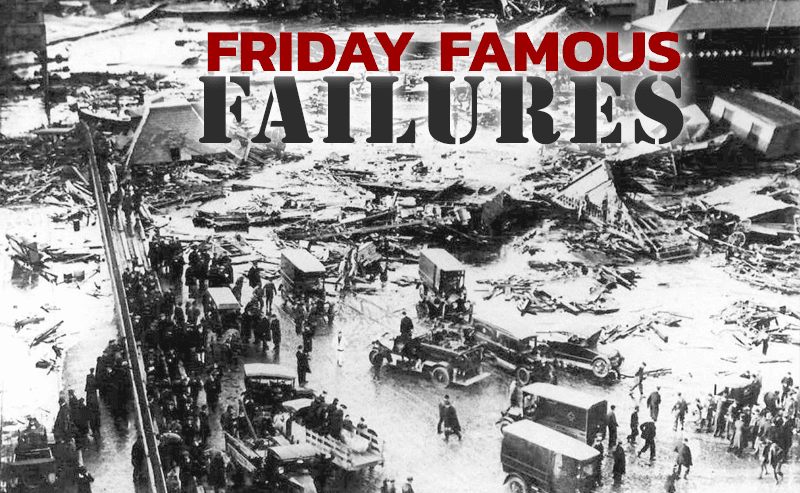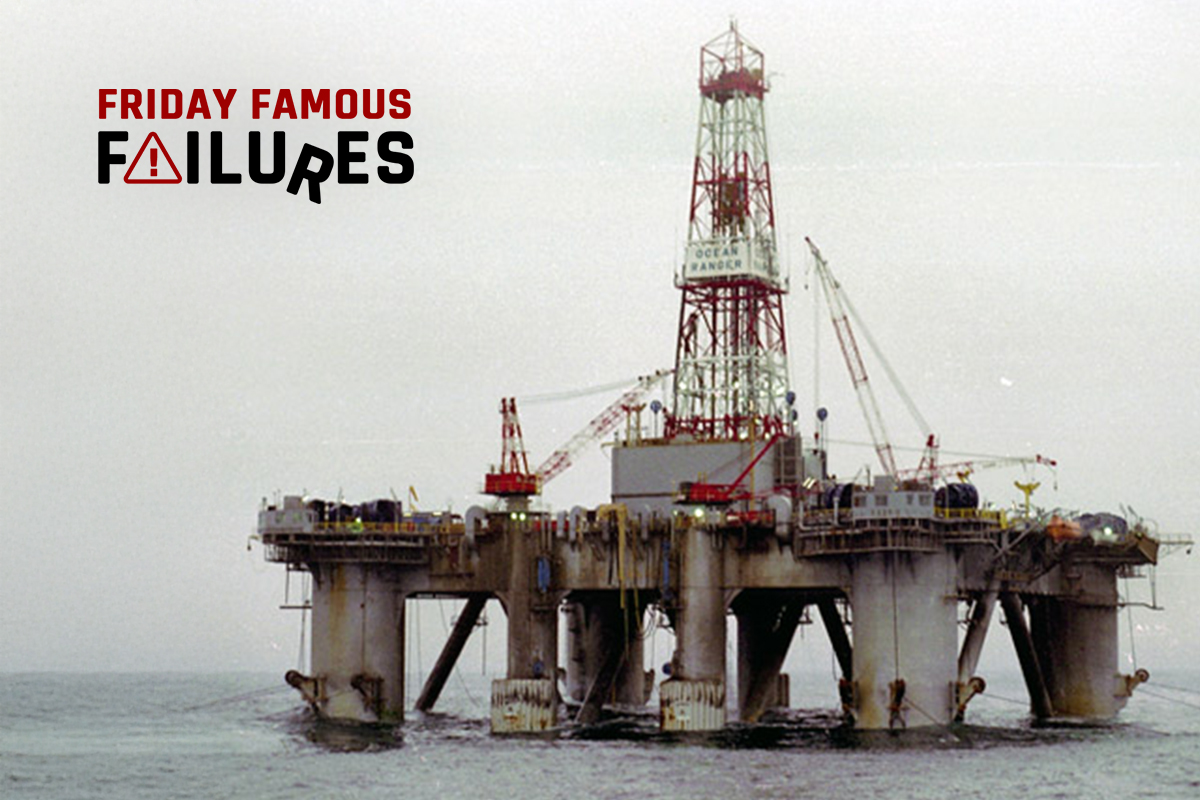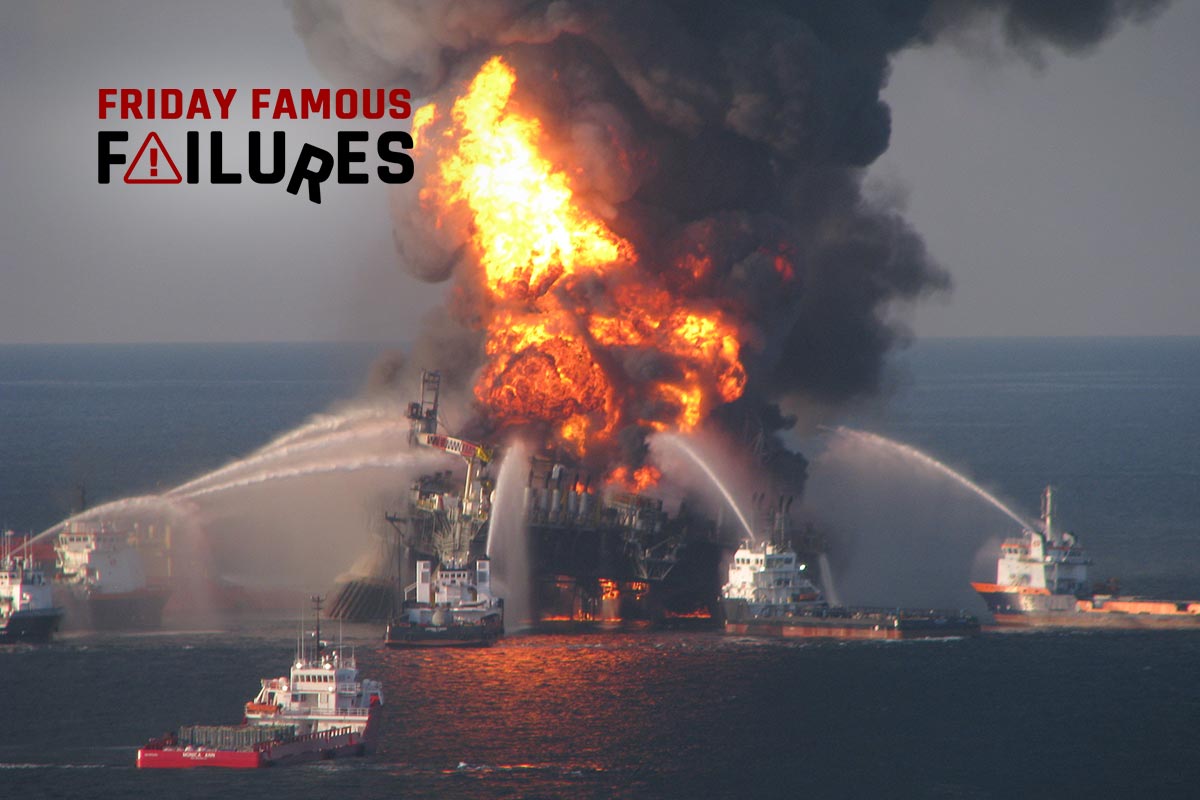Around 12:30 pm on January 15th, 1919, a noise like machine-gun fire erupted near downtown Boston. The jarring sound was followed by a muffled roar, and then 2.3 million gallons were released suddenly from a ruptured tank. A 15-foot wave of molasses flowed, at 35 miles per hour, into nearby residential neighborhoods and downtown Boston. It swept away buildings, vehicles, and people, killing 21 and injuring 150 more. The property damage was staggering.
What had caused such a catastrophic and destructive failure of the molasses tank?
Building the Molasses Tank
In 1915, the demand for industrial alcohol was growing fast, with World War I raging in Europe. The U.S. Industrial Alcohol (USIA) needed a place to store a vast amount of molasses—the raw material in manufacturing alcohol—in Boston.
USIA picked Arthur Jell, the company secretary, to head up the project. The USIA president told Jell that his standing in the company depended upon his success with this project, which had to be completed by the end of 1915. USIA needed to accept a shipment of nearly 1 million gallons of molasses on 31 December, and if there were no tank, it would be dumped in the sea as a financial loss.
Jell began negotiating for a parcel of land on the waterfront between the inner harbor and a residential neighborhood. He then contracted the Hammonds company to design and build the tank. The enormous tank would be 90 feet in diameter, 50 feet tall, and have a capacity for 2.3 million gallons of storage.
Construction of the tank began in early December 1915. Jell was desperate to complete construction by the end of the month, but bad weather slowed the project. With time running out, Jell took a major shortcut: instead of filling up the tank completely with water to leak test it, he would only fill the tank with six inches of water. This saved the cost of purchasing so much municipal water and several weeks of work. There were no leaks found, so the tank was declared complete on 29 December—and Jell’s project seemed a success. USIA could accept the large molasses shipment that came in on December 31st.
Employees of USIA, however, began reporting that the tank “groaned” ominously and vibrated every time it took on molasses. And the tank had numerous leaks visible around its sides—leaks that would pool at the base of the tank. Children from the nearby neighborhood would come regularly and scrape the “free molasses” off the ground.
USIA’s response to the concerns was to re-caulk it several times, then paint it brown. The tank continued to leak, but it was less visible against the brown paint.
Causal Factors
Insufficient thickness of the steel plates: During the civil trial after the flood, the contractor Hammond testified that the thickness of every steel plate used in constructing the tank was less than the design specification. For example, the design called for the steel plates on the top ring to be 0.312 inches thick; Hammond delivered a steel plate that was only 0.284 inches thick.
Insufficient numbers of rivets connecting the plates. An MIT professor who investigated the tank’s failure concluded that all of the joined steel plates used in the tank’s construction were fastened together with an insufficient number of rivets.
Fermentation due to rapid temperature change: The day before the tank failed, the temperature had been a bone-chilling 2 degrees Fahrenheit, causing the outer layer of the body of molasses in the tank to become dense and leathery. The day of the disaster itself, the temperature shot up to 40 degrees, causing the generation of carbon dioxide gas that could not vent out of the molasses through the leathery “shell” left over from the previous days’ cold. The gas exerted pressure on the weak sidewalls of the tank, ultimately causing a rupture.
No engineering experience in the project’s management. The person in charge of getting this tank built for USIA was the company’s secretary, Arthur Jell, who had been a clerk all his professional life and had no experience in construction or engineering.
Priority during construction given to speed, rather than sound practices: Due to the impending arrival of a large molasses shipment, the priority during construction was to finish the project quickly, and workers were ordered to hurry. The priority of speed over safety was also evident in Jell’s decision to forego a full leak test of the tank.
No building codes or regulatory oversight: There were no regulations or building codes that required any testing or inspection of the tank, either during or after construction. Nor was an engineer required to certify the tank’s design. Additionally, there was no permit required by local officials to build the tank. Only a permit for the tank’s foundation was required.
Location of the tank: The tank was sited in a densely populated area. This area had several economic and practical benefits–land was less expensive, access to water was good, and the Italian immigrant population of nearby neighborhoods was unlikely to hinder the project by protesting it officially. All the benefits to the site overrode any concern by USIA for the safety and welfare of the public.
Effects and Aftermath
After the flood, victims and survivors of the Great Boston Molasses Flood filed a lawsuit against USIA. Including testimony from 920 witnesses and lasting for 37 months, the trial became the longest and costliest in Massachusetts’s history.
USIA claimed that terrorists had bombed the tank, causing it to collapse and flood the city. To prove that there was no problem with the tank itself, the company hired an army of experts and academics. The defending attorney, Charles Choate kept the renowned metallurgist Albert Colby, his star expert witness, on the witness stand for three straight weeks and some days continued questioning him until 10 o’clock at night.
However, the plaintiffs proved USIA’s culpability; the company was found liable for the accident and paid $628,000 in damages. The Judge declared, “I believe and find that the high primary stresses, the low factor of safety … were responsible for the failure of this tank.”
As a result of the disaster, the Boston Building Department began requiring that the drawings for new construction be signed by an engineer and that the required engineers’ calculations be submitted along with the plans. This new legal requirement was a catalyst for municipalities across the country to start requiring all plans for major structures to be sealed by a professional engineer. Additionally, the State of Massachusetts adopted formal engineering licensing requirements to qualify engineers, a practice emulated in many other states.
The Great Boston Molasses Flood also had a significant impact on industrial practices. During the First World War, most government regulations affecting industry were focused on taxation and production quotas—there was little or no regard for the safety of workers or the public. But the horrible consequences of the flood, reported throughout the country, sparked many different kinds of regulation to ensure that large industrial projects were safe for all stakeholders, and the large judgment against USIA made industry realize that negligence regarding public safety could cost huge amounts of money.









Very interesting article, but a small correction. Massachusetts is a commonwealth rather than being a state.
I had learned that the causal factor was brittle fracture of the molasses tank due to cold weather, not the causes noted in this story. Classes in fracture mechanics cite the molasses flood as a seminal event in that field of study. Which is correct? (If the tank was indeed riveted, that might discount the brittle fracture conjecture, as a fracture would not propagate to an adjacent panels.)
I am not sure anyone today knows the answer for certainty. We can only speculate based on what data we have about the accident and what we understand about tank construction and failure. Engineers who have since reviewed the tank plans indicate it was under designed. Further, the steel was found to be thinner than designed dropping the factor of safety to around 1.8. At the time of failure, stresses from a full tank are estimated to be about twice allowable therefore exceeding the factor of safety. That alone could have caused the failure. The steel was low on manganese so it did have a high transition temperature on a cold day, and cracks were found around rivet holes. Both of those indicate that brittle fracture could have lead to failure by “unzipping” the rivets. That might explain the suddenness of the failure. Fermentation could have resulted in a build up of pressure further increasing stress. There is a lot of evidence of failure. So much that it is hard to pinpoint which factor caused the disaster. But all worth learning lessons from.
I think the key observation here might be the report of “machine gun fire”. That would be the sound of the rivets failing, either through fracture of the rivet or as the steel plates punched out around the rivets.